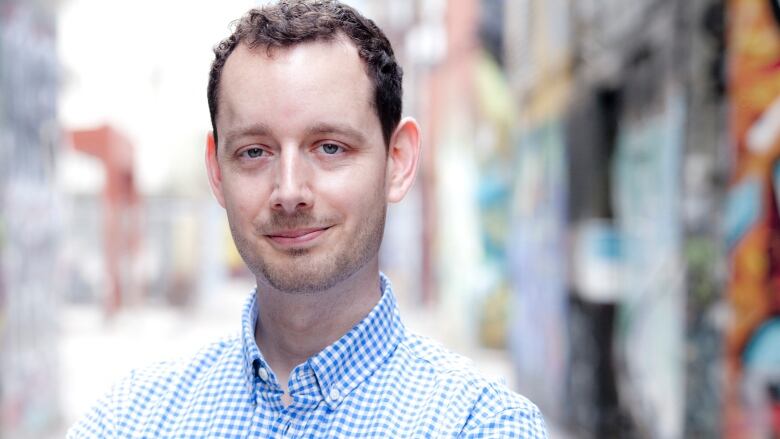Creative Commons hits 1 billion licences for free usage
Toronto-based CEO Ryan Merkley explains why so many people are giving their work away for free

The creators of more than a billion photos, videos, songs and other works are giving them away on theinternetfor others to use for free forevera big milestone for Creative Commons, the non-profit organization behind the copyrightlicencesallowingthat use.
"I think it's a remarkable deal," said RyanMerkley, the group's Canadian, Toronto-basedCEO, of the numbers released in the group'sState of the Commons reporttoday.
The report shows that Creative Commonslicenceshave nearly tripled in the last five years to 1.1 billion. The first Creative Commonslicenceswere released in December 2002.
'I think thehighest order of contribution that someone could make to the commons is to share something they made themselves and to give it away and invite others to build on top of it.' Ryan Merkley, CEO of Creative Commons
Normally when you create something, it's automatically protected by a restrictive copyright that requires someone to seek your permission to use it and negotiate how much to pay you for the use. You can only override that by actively choosing an alternative licence.
"The CC licensor has to choose and take action to share,"Merkleysaid, "whereas, you can draw a picture on a napkin and have copyright over that work for life plus 50 years in Canada."
A work licensed under Creative Commons can be used or shared immediately if the user abides by conditions that you set. That may be as little as providing proper attribution. More restrictive licenses may stop users from altering the work when they use it, or from using it for commercial purposes.
But generally, you give up the right to profit directly when others use your work and to maintain specific control over where it's used.
"The CC licence is forever and you're adding it to the public commons for all time,"Merkleysaid. "It's a massive gift. I think the highest order of contribution that someone could make to the commons is to share something they made themselves and to give it away and invite others to build on top of it."
Why creators give their workaway
Why would so many people do that?Merkleysaid many creators feel they benefit from collaborating openly on theinternet:
- Musicians and photographers have the opportunity for greater exposure.
- Educators in the open education movement believe that sharing resources means "we're not constantly reinventing the wheel" and being able to remix the work lets them tailor materials to the needs of different students.
- Academics and scientists believe their findings should be freely available to everyone and not behind apaywallso it can be used to make new discoveries, inform policy or develop new technologies.
- Governments want their data to be widely used for the benefit of businesses and the public anywhere. "They want a licence that works everywhere in the world. They want those who pick it up to know that it can be used with other datasets.
Widely viewed and used
Statistics suggest that Creative Commons works are widely viewedand used 136 billion times in 2015, the report shows.
Merkleysaid that's not just because they're free to use, but because they're simple and don't require extra steps such as a consultation with lawyers.

"I don't have to contact the artist, I don't have to sign a form, I just have to follow terms and I know with confidence I can use that work and I think that's a big deal."
While he's pleased with the billionlicencesmilestone, he admits that the number of Creative Commonslicencesis quite small compared to the overall content of theinternet."There will be two billion images uploaded to theinternettoday," he said.
The challenge is that normal copyright is automatic, but Creative Commonslicencesmust be consciously chosen by those who are aware that it's an option in the first place.
Merkleysaidthere aren't good statistics on what kind of content has been licensed under Creative Commons, but among media on just 16 platforms, such asFlickr,YouTube,SoundCloud, and open access journals, last year Creative Commons licensed work included:
- 391 million photos and artworks
- 46.9 million articles, stories and documents
- 1.4 million research journal articles
- 18.4 million videos
- 4 million audio tracks
- 76,000 open educational resources
It wasMerkley'swork on Toronto'sopen data project under mayor David Millerin 2009 that eventually led him to theMozillaFoundation and thenCreative Commons.
Data is a type of content supported by Creative Commons since the end of 2013.Merkleyhopes to see that category grow in the future, along with3D models ranging from NASA spacecraft to fossilsto sculpturesthat are being increasingly added to the public domain as 3D printers get more popular.












_(720p).jpg)


 OFFICIAL HD MUSIC VIDEO.jpg)
.jpg)



























































































